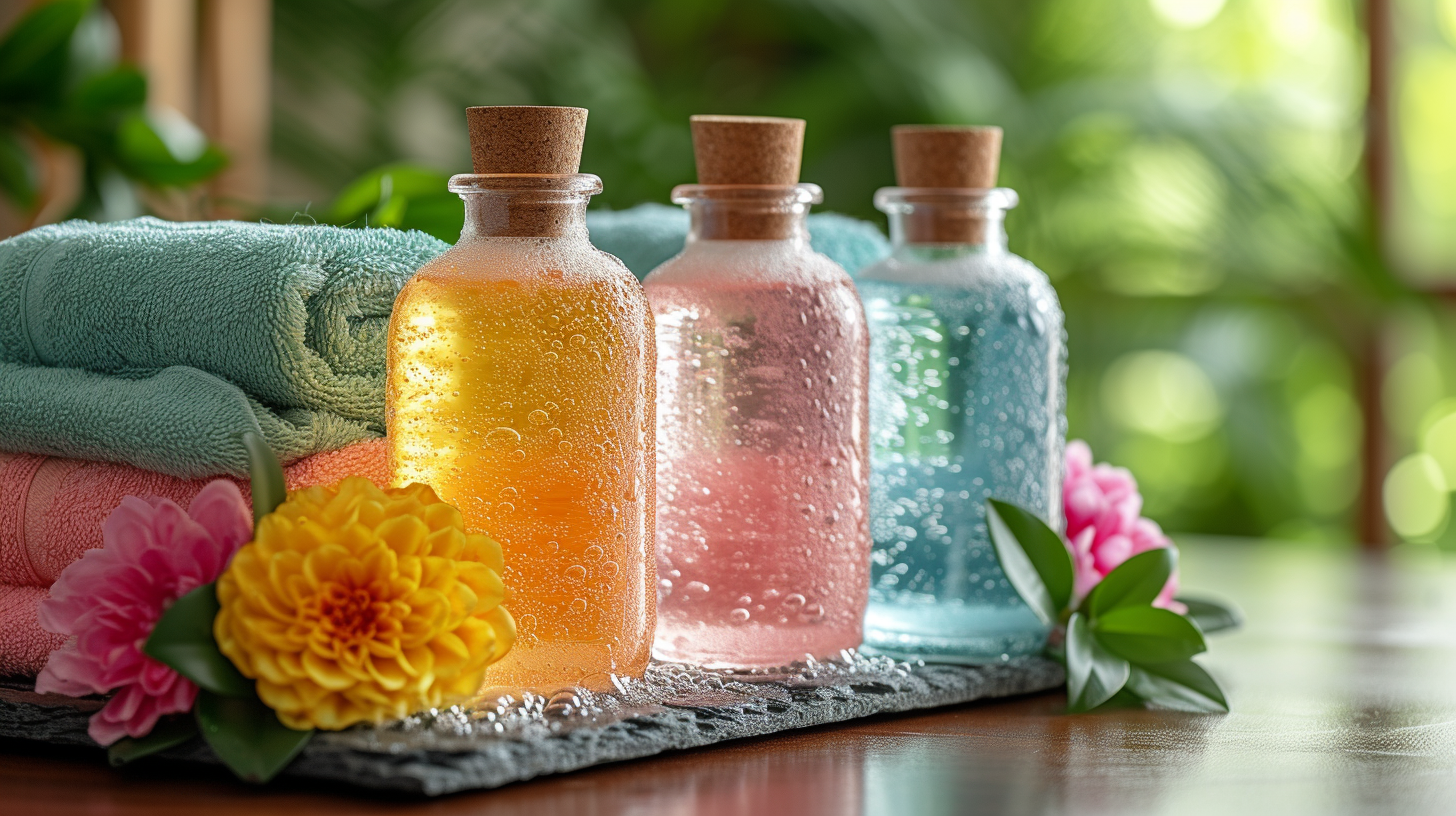Key points
• Biodegradable Ingredients: Septic safe shampoos are formulated with natural, biodegradable ingredients that break down easily in a septic system, preventing clogs and maintaining the balance of beneficial bacteria.
• No Harsh Chemicals: These shampoos avoid harsh chemicals such as parabens, sulfates, and phosphates, which can disrupt the septic system’s microbial ecosystem and potentially lead to system failure.
• pH Balanced: Septic safe shampoos are often pH balanced to be gentle on both hair and the septic system, ensuring that they do not interfere with the natural processes that occur within the septic tank.
Contents
- 1 Key points
- 2 The Key Players: Surfactants, Preservatives, and Additives
- 3 Natural vs Synthetic: A Breakdown Battle
- 4 The Science Behind Biodegradable Shampoos
- 5 Understanding the Broader Environmental Impact of Septic Safe Shampoos
- 6 Balancing Hair Care Needs with Ecological Responsibility
- 7 Comparing ‘Green’, ‘Natural’, ‘Eco-Friendly’, and ‘Septic Safe’
- 8 Crafting DIY Septic-Safe Shampoo
- 9 Certifications to Look for When Choosing Shampoos
- 10 The Relationship Between Regulations and Product Safety
- 11 Ensuring a Healthy Septic System
- 12 Innovations in Eco-Friendly Shampoo Formulations
- 13 Glossary of Terms Related to Septic Systems and Hair Care Products
- 14 Resources for Further Reading on Septic Safe Practices and Products
- 15 Frequently Asked Questions (FAQ)
Selecting Septic-Friendly Products: A Wise Move
Picking out septic-safe shampoos and other products isn’t just good for your wastewater system; it’s also a nod to the environment. By choosing these eco-friendly options, you’re supporting a healthier planet while keeping your septic system humming along without any unwanted hiccups.
Grappling with the intricacies of hair care products like shampoos and conditioners, you’ll find a jamboree of various components. These are not just concoctions to clean or soften your locks; they’re brimming with compounds that could impact your septic system in ways you mightn’t immediately fathom.
Composition of Conventional Shampoos and Conditioners
Typically, your run-of-the-mill shampoo is packed with surfactants; they’re the workhorses that send dirt and oil packing from your tresses. Thickeners give it that satisfying consistency, preserving agents ensure it doesn’t go off quicker than a carton of milk, while fragrances make it smell like a fresh spring morning. Contrastingly, conditioners often employ silicones and oils, which are akin to that friend who’s always got your back, helping detangle and smooth out hair kerfuffles.
Common Ingredients and Their Effects on Septic Systems
Now, let’s chat about septic systems – those unseen heroes dealing with wastewater. Common ingredients we adore in our hair care may rub these systems the wrong way. Surfactants for instance – some types beat up the natural bacterial balance in septic tanks, causing quite the upset. Similarly, non-biodegradable elements can throw a wrench into the works, building up and potentially leading to blockages or failures in the system.
The Concept of Biodegradability in Hair Care Products
Diving deeper into biodegradability—a term that should be music to any eco-enthusiast’s ears—it’s about how swiftly Mother Nature can reabsorb ingredients without leaving a trace. Sure enough, hair products labeled as “septic safe” typically contain ingredients that shake hands with nature rather quickly. This means they’re designed to break down without giving grief to both our beloved Earth and those hardworking septic systems.
There you have it—a wee guide on keepin’ both your mane and septic system jubilant. A switch to septic-safe hair care isn’t just a drop in the ocean; it could mean a world of difference for environmental balance.
In the realm of eco-friendly hair care, discerning which ingredients are septic safe is critical. These components should not only keep our locks luscious but also protect the delicate balance within septic systems. Pay a little attention – an ingredient’s biodegradability and non-toxicity are key to ensuring it won’t harm the beneficial bacteria working hard in your septic tank.
The Key Players: Surfactants, Preservatives, and Additives
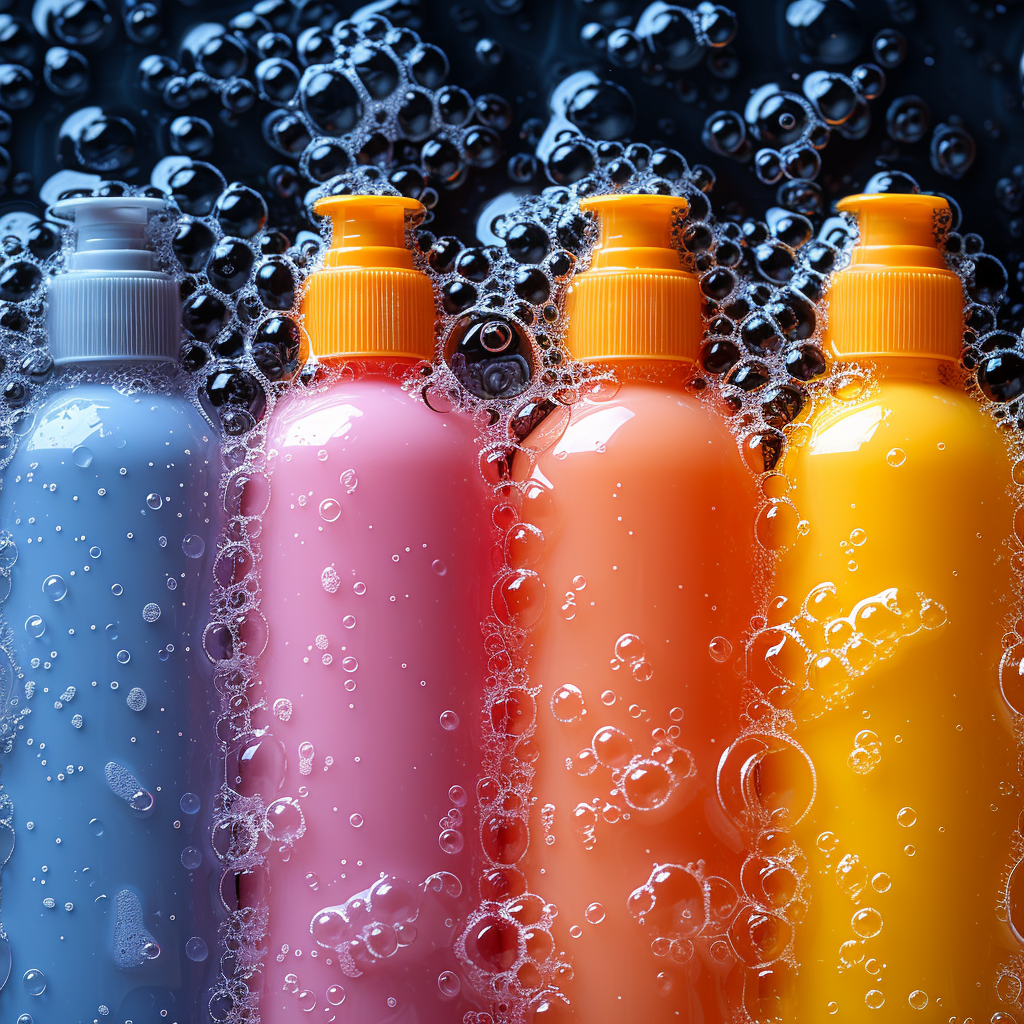
It’s no secret that shampoos need surfactants; they’re the stars responsible for cleansing your hair. However, certain surfactants have gained a bad rep for being tough on the environment and our septic systems. You’ll want to stay clear of harsh ones like sodium lauryl sulfate (SLS) and look out for gentler siblings such as decyl glucoside.
Preservatives are a necessary evil in preventing microbial growth, but that doesn’t mean they can’t be septic safe. Opt for natural preservatives over synthetic options whenever you can. As for additives – fragrances, colours, and conditioners – if they aren’t easily broken down, they’re not doing your septic tank any favours.
Natural vs Synthetic: A Breakdown Battle
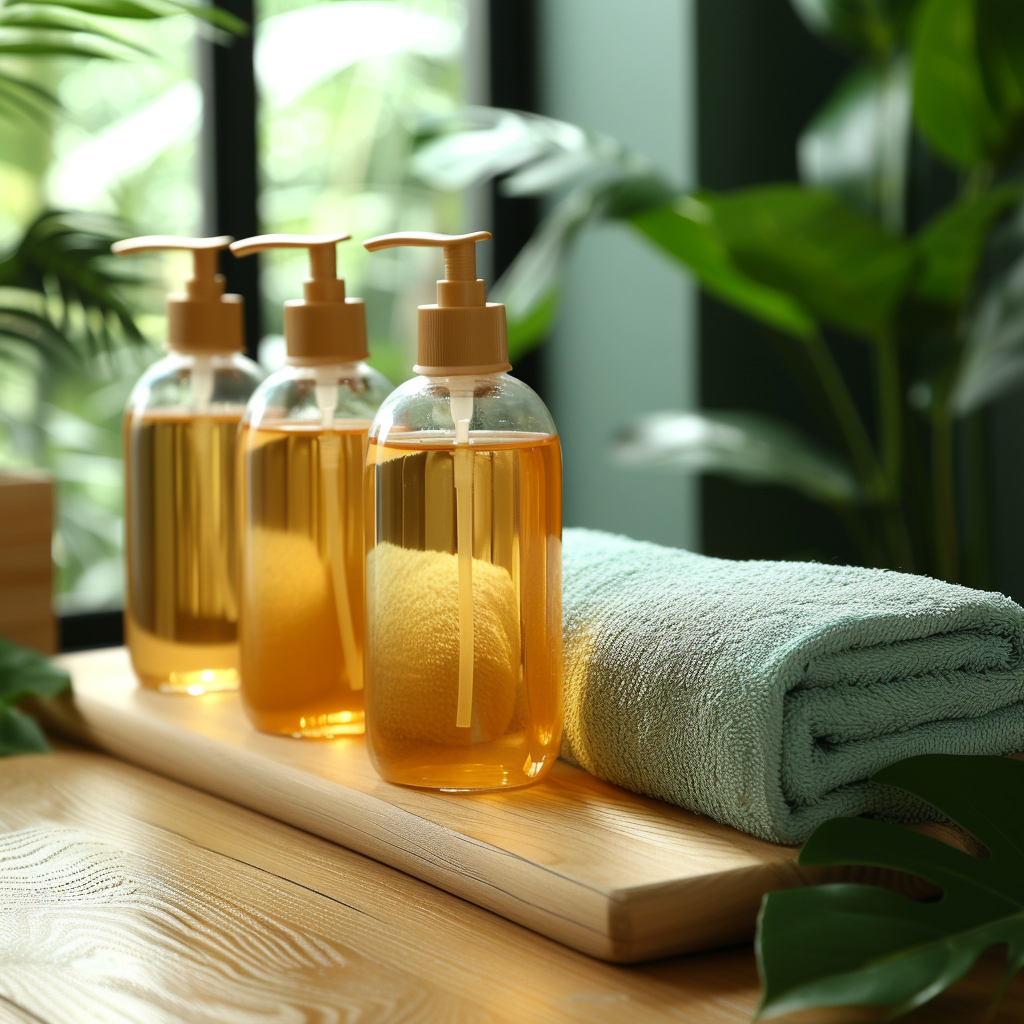
Going head-to-head we have natural ingredients versus their synthetic counterparts. The former are often plant-derived and stand a better chance at being biodegradable. Synthetics sometimes stick around longer than your in-laws after Thanksgiving dinner, with chemical structures that can take ages to break down. Consequently, sticking to natural ingredients isn’t just a trendy move; it’s a thoughtful choice for septic system longevity.
All in all, keeping our septic systems hale and hearty comes down to picking shampoos that play nice with nature. While we’ve waded through some of the basics here, always remember that less is often more when piling on those hair care products in the shower!
The Science Behind Biodegradable Shampoos

Biodegradation is a crucial ecological process where natural materials are broken down by microorganisms into simpler substances. This process transforms potentially harmful products into harmless ones through natural mechanisms. In the context of haircare, a biodegradable shampoo not only takes care of your locks but also ensures that after going down the drain, it won’t linger in the environment or disrupt septic systems. Instead, it succumbs to nature’s clean-up crew—bacteria and other microorganisms.
Factors Influencing Shampoo Biodegradability in Septic Systems
When it comes to septic systems, there’s a delicate balance that must be maintained. A couple of key factors affect how well a shampoo will biodegrade within these systems:
– Chemical Composition: Some shampoos contain synthetic substances that don’t play well with bacteria, taking eons to break down—or not at all! On the flip side, shampoos boasting natural [ingredients] are typically more septic-friendly.
– Volume Considerations: Even if you’ve got biodegradable formulas on your side, pouring copious amounts down the drain can overwhelm a septic system. Moderation is key; even eco-friendly shampoos require a bit of time to be processed.
By considering these elements, manufacturers can design shampoos tailored for seamless integration into natural cycles without causing chaos in your septic tank.
The Chemistry Dance: pH Levels, Enzymes, and Microbial Health
Everything’s connected; get one thing outta whack, and there’s trouble brewing—no surprise there! Here’s how pH levels, enzymes, and microbes join forces in this chemical tango:
– pH Levels: A balanced pH isn’t just good for your scalp; it helps ensure that the cleaning agents don’t go rogue on beneficial bacteria processing waste. Too acidic or too basic conditions can knock out those micro-critters crucial for breaking things down.
– Enzymes: Think of enzymes like little protein wizards—they speed up chemical reactions without getting used up themselves. If the pH is comfy-cozy for them too, they’ll happily help transform complex molecules into digestible bites for microbes.
– Microbial Health: To tie it all together—if enzymes are happy and pH levels are chill, then you betcha those microorganisms are thriving: gobbling up waste and creating harmony within your septic system.
So there you have it—biodegradable shampoos aren’t just about keeping chemicals outta our waters; they’re also about harmonizing with a system greater than any one component. It’s all interlinked—and so what goes on your head should always be friendly enough to meet those microscopic janitors doing their thing below ground.
Understanding the Broader Environmental Impact of Septic Safe Shampoos
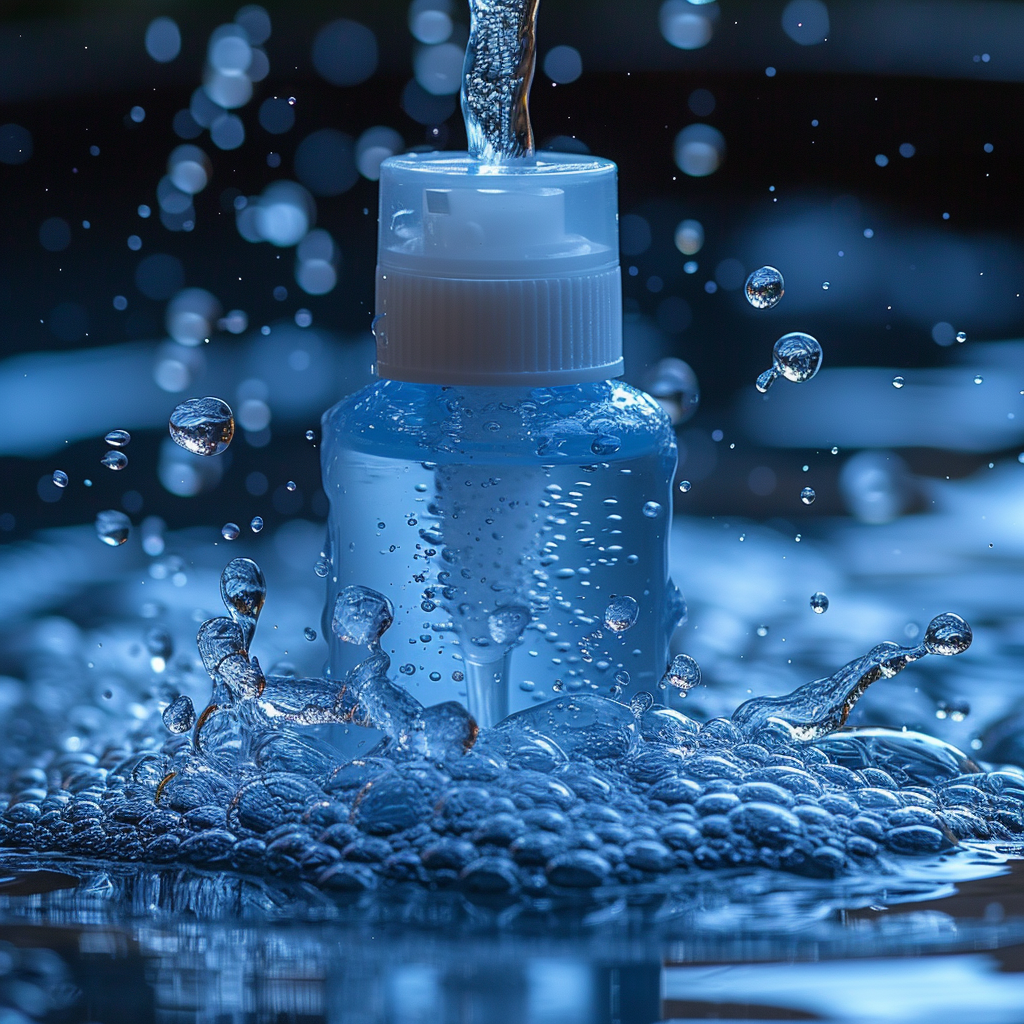
When diving into the eco-friendliness of hair care products, it’s essential to note that septic safe shampoos play a significant role in safeguarding our ecosystems. These shampoos are designed to break down easily in septic systems, which prevents harmful chemicals from leeching into the soil and potentially contaminating groundwater. Moreover, by opting for these products, consumers contribute to reducing pollution and preserving aquatic life, as these formulations are less likely to disrupt water habitats if they make their way into natural water sources.
Balancing Hair Care Needs with Ecological Responsibility
Nowadays, many folks find themselves wrestling with the desire for healthy locks while also longing to live more sustainably. It’s quite the balancing act, isn’t it? Good news is, thanks to advances in green chemistry, it’s entirely possible to have your cake and eat it too – metaphorically speaking. Hair care products now boast formulas that are both effective for various hair types and gentle on the planet. So you don’t have to compromise on hair health for the sake of being environmentally conscious.
Comparing ‘Green’, ‘Natural’, ‘Eco-Friendly’, and ‘Septic Safe’
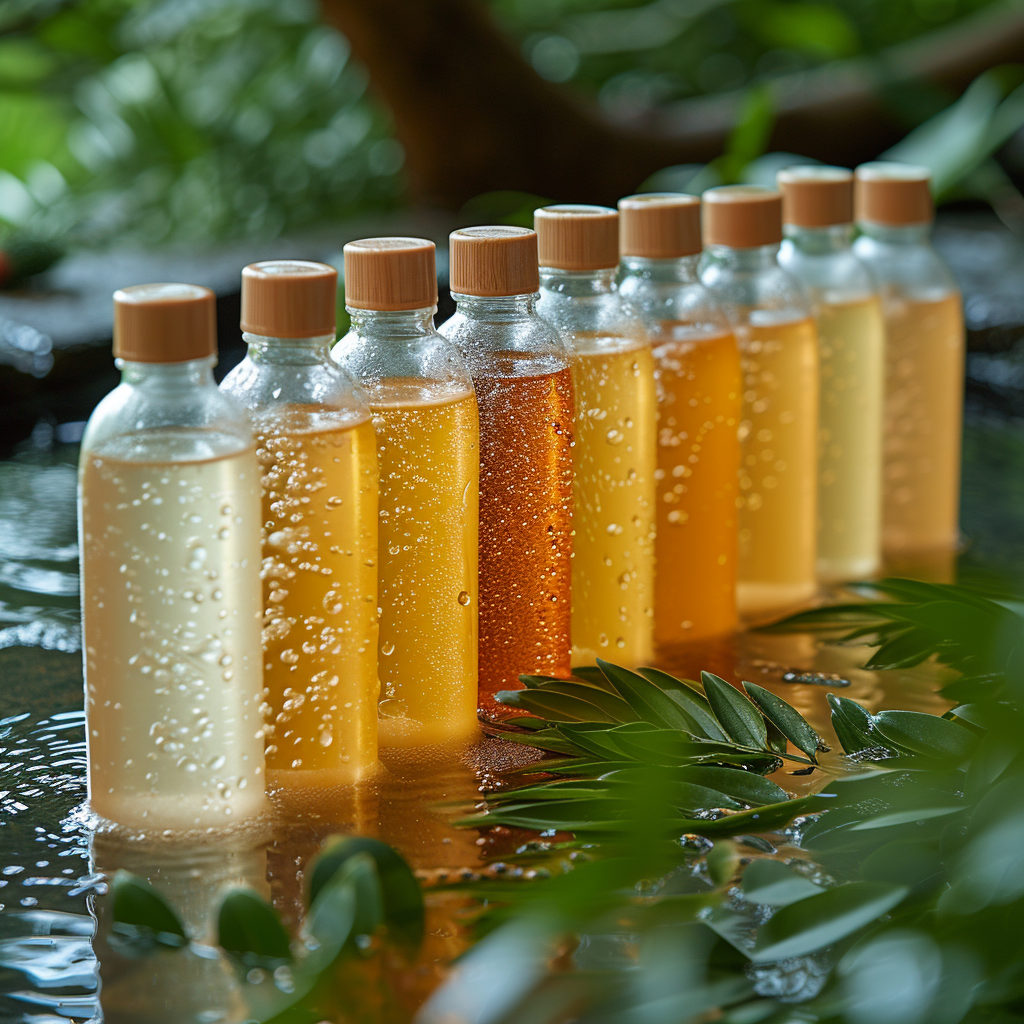
Ever heard someone used the terms green, natural, eco-friendly, or septic safe and wondered if they all mean the same thing? Well, let me break it down for you; while these phrases are buddies in promoting environmental wellness, they do hold distinct meanings:
– Green: This generally implies that a product is designed keeping the environment in mind but isn’t strictly regulated.
– Natural: Typically indicates that ingredients come from natural sources; however, this doesn’t necessarily mean they’re good for a septic system.
– Eco-friendly: This suggests that something doesn’t harm the planet but falls short of indicating specifics regarding biodegradability or toxicity.
– Septic safe: Refers specifically to products that won’t disrupt the delicate balance inside your septic tank.
So when you’re scoping out your next shampoo purchase, keep an eye out for these nuances—if you’re aiming for something that’ll treat your tresses right without giving Mother Nature a hard time.
Remember to exercise a little discretion when selecting your personal care items – each small choice can have a ripple effect on the wider world.
When you’re in the market for a septic safe shampoo, it’s crucial to know what makes a product gentle on these sensitive systems. Essentially, you’re looking for options that won’t disrupt the delicate balance of bacteria in your septic tank. Here’s a little rundown to help you figure out what to keep an eye out for.
Criteria for Assessing Septic Safety in Hair Care Products
Let’s talk about what ticks the boxes for septic safety. The golden rule is to look for shampoos free from harmful chemicals that can bully the good microbes in your septic tank into submission. Ingredients such as phosphates, parabens, and harsh sulfates are infamous for causing trouble down the line. Also, give a thumbs up to products with biodegradable ingredients; they’re like a peace offering to mother nature. To top it off, go easy on the antibacterial agents – septic systems thrive on bacteria, after all!
Understanding Labels and Marketing Terms
Interpreting product labels can sometimes feel like deciphering an ancient script. “Eco-friendly,” “natural,” “green”—these terms can be incredibly vague without standards to back ’em up. Keep an eagle eye out for certifications like EcoLogo or EPA’s Safer Choice, which lend credence to environmental claims. And don’t forget, “organic” might sound wholesome but it isn’t always synonymous with septic-safe.
Recommendations for Septic Safe Shampoo Brands
If you’ve been racking your brain about which brands line up with all this criteria, worry no more! There are several standout brands that are making waves sans the environmental toll. For instance, look towards brands like Avalon Organics or Seventh Generation that pay mind to their impact on both your hair and your septic system. They not only abstain from using harsh chemicals but also wrap their goods in environmentally conscious packaging.
Crafting DIY Septic-Safe Shampoo
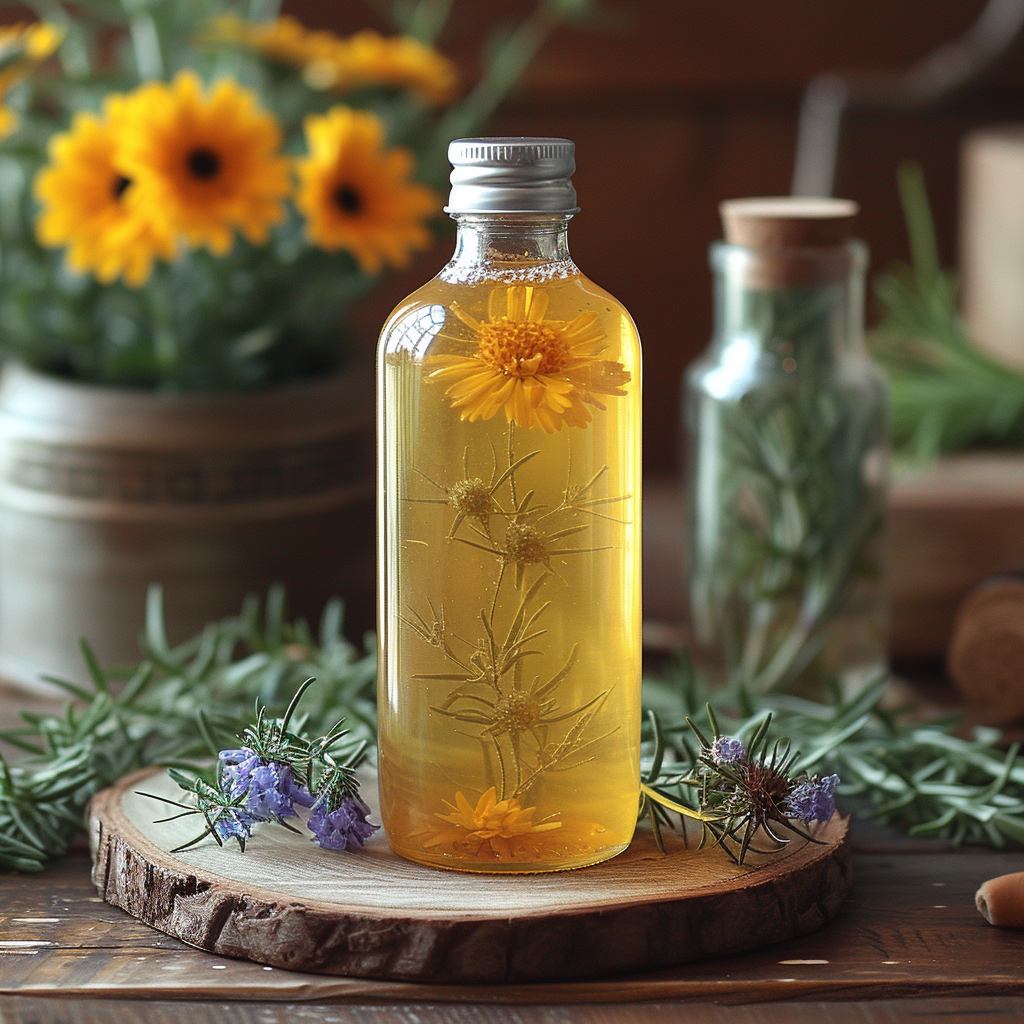
Ensuring your hair care routine doesn’t disrupt your septic system can be as simple as whipping up a batch of shampoo in your own kitchen. A homemade concoction isn’t just gentle on your plumbing; it’s also a nod towards sustainable living. You’ll find that a pinch of creativity combined with basic ingredients can lead to environmentally friendly and effective hair care solutions.
Recipes for Handmade Septic-Friendly Shampoos
Starting with recipes that are kind on your septic system, consider these straightforward formulations. Grab a reusable bottle, select some safe and biodegradable substances, and mix up the following:
- Basic Baking Soda Blend: Dissolve around half a teaspoon of baking soda into one quart of warm water. Shake well before each use. This mixture may seem humble, but it’s quite effective at cleaning your hair.
- Nourishing Vinegar Rinse: After shampooing, try an acidic rinse composed of one part apple cider vinegar to three parts water to condition your hair and restore pH balance.
- Coconut Milk Creation: Combine 1/4 cup of coconut milk (the real stuff), 1/3 cup liquid castile soap, and a few drops of your preferred essential oil for fragrance. Mix ’em up for a luxurious lather.
The Significance of Ingredient Ratios and Swaps
When you’re playing chemist in your home lab, respecting the ratios is vital – too little or too much of any ingredient can throw off the effectiveness or safety of your shampoo. For instance, if you get heavy-handed with baking soda, you might end up with an overly drying scalp situation. Always err on the side of caution and start with modest amounts.
Substituting components can also be a game-changer; if coconut milk isn’t sitting in your pantry, why not go for almond milk? It’s still smooth and hydrating. Similarly, if apple cider vinegar makes you wrinkle your nose, white vinegar can step up unassumingly without compromising the eco-friendly credentials.
Comparing ‘Homemade’ to ‘Natural’
Sometimes folks mix up the terms ‘homemade’ and ‘natural’, thinking they’re always interchangeable – not quite! Just because something is handmade doesn’t mean it only contains ingredients from Mother Nature herself. However, more often than not, what you craft at home tends to lean towards the natural spectrum since most store-bought blends contain preservatives and chemicals that wouldn’t typically feature in a DIY brew.
Remembering these hints will ensure that both your locks and septic tank remain in tip-top shape. Move forward confidently knowing that every wash supports both personal health and our lovely planet’s well-being – now that’s something worth flipping your hair over!
When it comes to the oversight of septic-safe personal care products, regulatory bodies and certification standards play a pivotal role. Essentially, these organizations ensure that shampoos and similar items live up to their eco-friendly promises, without causing harm to septic systems. A critical aspect they watch over is the biodegradability and absence of harsh chemicals known to disrupt the delicate balance within septic tanks.
Now, you might ask yourself why that matters a bunch. Well, the thing is, unchecked products could lead a septic system to an early grave – think clogs, backups, or worse – full system failure. That’s where our regulatory friends come in; they set the guidelines manufacturers must adhere to.
Certification standards serve as a benchmark for safety and environmental stewardship. They’re usually based on rigorous testing that ensures only gentle ingredients make the cut. By doing so, they maintain the essential bacterial action crucial for breaking down waste in septic systems. In other words, they’re like guardians – keeping septic tank health in check while also giving consumers peace of mind.
Certifications to Look for When Choosing Shampoos
If you’re out hunting for hair care that won’t wreak havoc on your septic system, keep your eyes peeled for specific certifications. These little badges of honor tell you whether a shampoo has passed muster with environmental and health standards:
- EcoLogo: Developed by Environment Canada, it’s one of North America’s most widespread environmental certifications.
- Green Seal: An American nonprofit organization offering certification for products that are sustainable and work effectively.
- EU Ecolabel: Awarded by the European Union as a sign of ecological quality.
Tracking down these labels isn’t just about being green—it’s practical, too. Products sporting these certs are less likely to cause costly messes down the line. It’s always wise to seek them out before adding any product to your shopping cart.
The Relationship Between Regulations and Product Safety
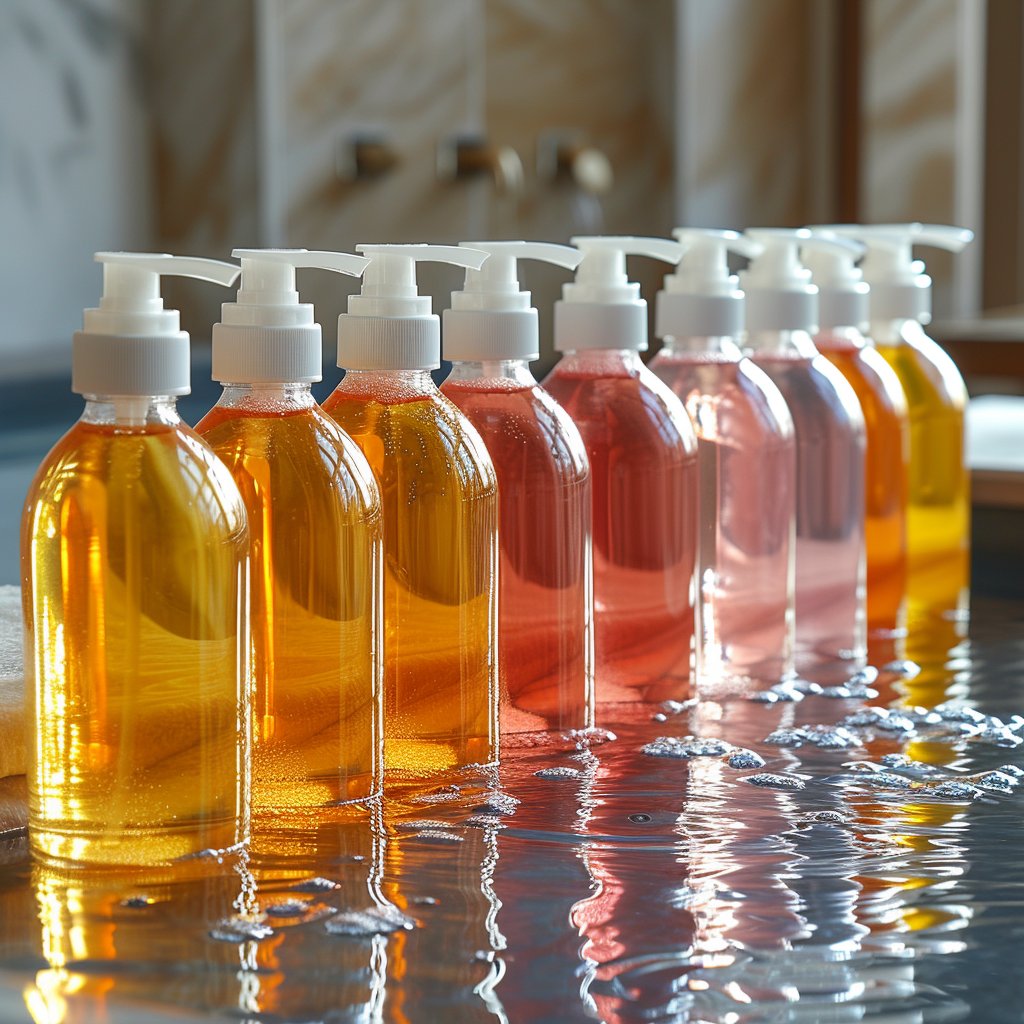
You’ve probably heard the phrase “safety first” more than once—it’s like a mantra in manufacturing. And when it comes to regulations and product safety, that cliché rings pretty true. Simply put, regulations establish what’s safe and what’s not; without them we’d be taking stabs in the dark regarding product use and safety.
In this context, governing bodies dictate what goes into our shampoos and conditioners to keep our water clean and ecosystems thriving—that includes whatever goes down our household drains as well! They look at how these ingredients interact with septic systems: Are they going to degrade nicely or throw a wrench in wastewater treatment processes? It’s all pretty interconnected—you can’t have safe products without regulations guiding manufacturers along the way.
Ultimately, each regulation is like another layer of assurance between you and potential product pitfalls. So next time you’re browsing through aisles or webpages teaming with products promising shiny locks and fragrant wafts—remember those regs are there keeping things above board… well,)hopefully). Even if we take ’em for granted (and let’s face it, many of us do), they’r integral tools in safeguarding both human health and Mother Nature’s finest work
Ensuring a Healthy Septic System
Maintaining a thriving septic system isn’t rocket science, but it does require a bit of know-how and attention. First off, it’s important to keep up regular inspections and pump-outs. Don’t let it slip your mind—every few years should do the trick. You’ll also want to be mindful of what goes down the drains. Harsh chemicals and non-biodegradables are definite no-nos as they can wreak havoc on the delicate balance within your system. Water conservation is another piece of the puzzle; less water means less strain on your system, so fix those pesky leaks and consider efficient fixtures.
Role of Shampoos in Septic Health
When you’re lathering up, you might not think twice about where your shampoo ends up, but here’s the scoop: regular shampoos often pack ingredients that can mess with your septic system’s microbes—the good guys that break things down. If you use too much shampoo or ones containing harsh elements (like certain detergents), over time, you could be heading towards clogs or worse. That’s why opting for septic-safe shampoos is such a smart choice.
Exploring Septic Safe Shampoos and Treatments
Now, let’s talk similarities. Septic-safe shampoos share a little kinship with septic treatments—they’re both designed with the health of your system in mind. Such shampoos typically skip the nasties like parabens or synthetic fragrances which don’t play well with septic systems.
Instead, they’ll gently cleanse without throwing a wrench into things. Pretty neat, right? Just like treatments help maintain an optimal environment for waste decomposition, these shampoos are all about preventing unwanted blockages before they start—a match made in septic-system heaven!
Innovations in Eco-Friendly Shampoo Formulations
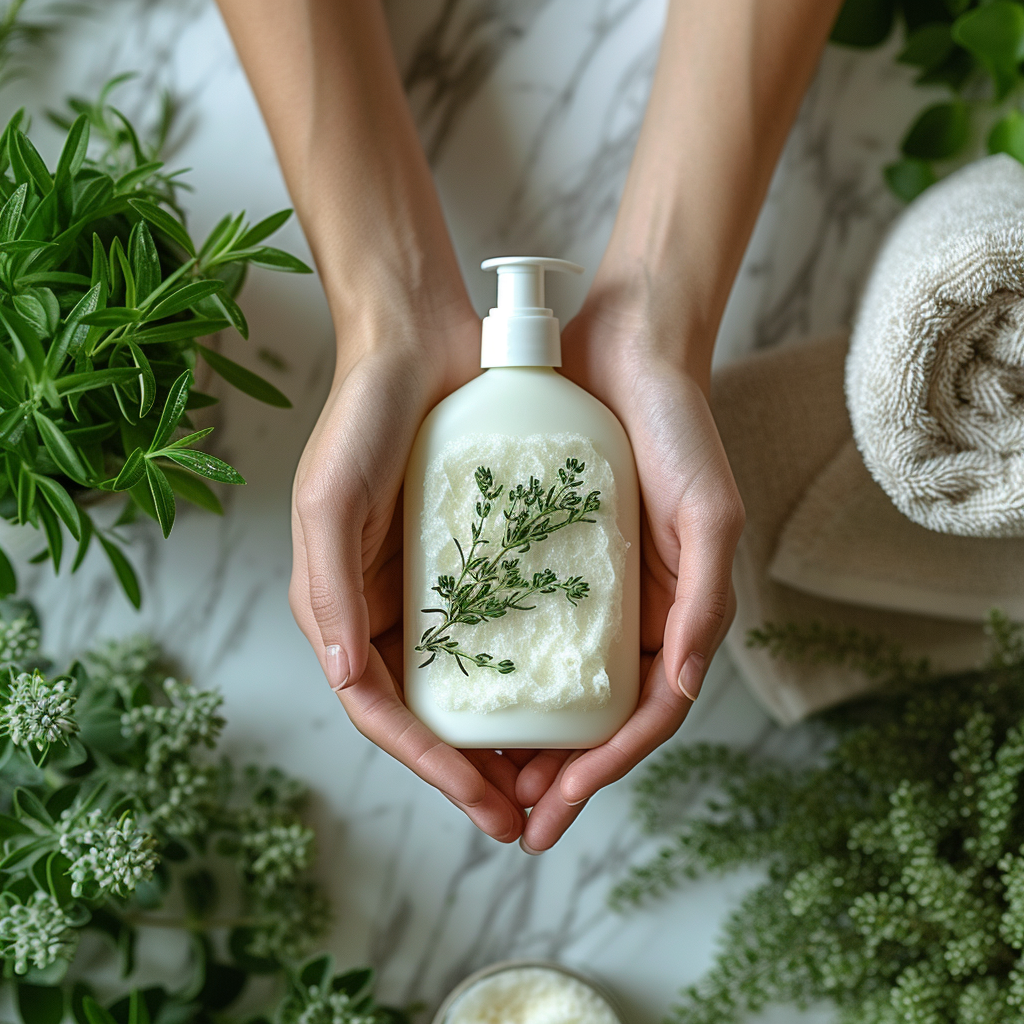
As the demand for environmentally friendly products continues to grow, companies are responding with innovative solutions for septic safe shampoos. These advancements focus on cutting-edge ingredients and green chemistry. One trending approach is the use of biodegradable surfactants which break down easily without harming the microbial balance in septic systems. Additionally, there’s increasing use of natural and organic substances that cater not only to septic system safety but also enhance hair health.
The Evolving Landscape of Septic Safe Product Availability
Gone are the days when eco-conscious consumers had limited choices. Now, there’s a breadth of options available, from mainstream markets to niche health stores. You’ve got high chances of finding septic safe hair care in your local grocery aisle or online. The key here is that more manufacturers are jumping on the bandwagon, realizing that if they don’t adapt, they might be left in the dust.
Glossary of Terms Related to Septic Systems and Hair Care Products
Delving into the world of eco-friendly hair care and septic-safe practices can seem daunting at first—you’re knee-deep in new terminology that might confuse the heck outta you. Don’t fret, we’ve got you covered with a handy glossary that’ll make you smart as a whip in no time. So, let’s kick things off with some essential terms:
- Biodegradable: A must-know word! It refers to substances that break down naturally thanks to bacteria and other organisms, leaving Mother Nature smiling.
- Septic System: This underground structure is like your home’s personal waste treatment plant. It uses natural processes to handle your household’s wastewater.
- pH Level: Simply put, it’s how acidic or alkaline your shampoo is—an important factor since the wrong pH can stir up trouble in your septic system.
- Sulfates: These chemicals are cleaning studs; they create foam but can be harsh on your hair and your septic buddy.
- Parabens: They keep products fresh longer but might disrupt hormone functions and are frowned upon by any eco-warrior.
Sure, there’s more nerdy terms where those came from, but these are the biggies that’ll help you sift through the maze of eco-gentle products.
Resources for Further Reading on Septic Safe Practices and Products
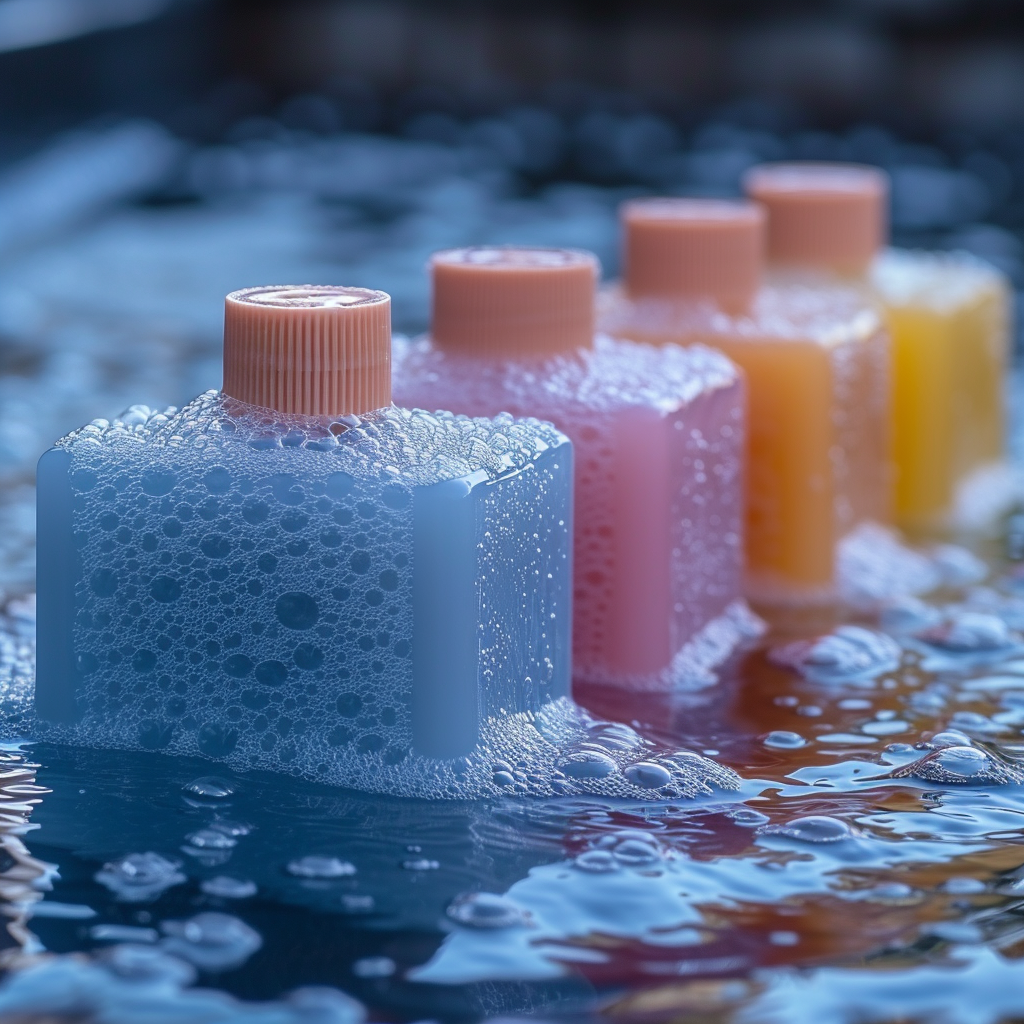
Ain’t nobody an instant expert in all things septic-safe—but don’t worry, there’s a treasure trove of resources out there just waiting for a curious mind like yours. Whether you want to go deep into eco-friendly practices or just find a gentle shampoo that won’t wage war on your septic tank, these resources are worth their weight in gold:
- If you’ve caught the green living bug, sites like EcoWatch or The Good Trade will guide you through sustainable choices without making your head spin.
- To get sciencey with it, hit up the Environmental Protection Agency (EPA)‘s website—they know their stuff when it comes to environmental dos and don’ts.
- Loyal to natural beauty? Blogs like MindBodyGreen have nailed down reviews of products that love both your locks and lakes alike—perfect for conscientious consumers!
Dig around a bit, read up a storm, and soon enough, you’ll be savvy about what goes into your shopping cart and down your drains—a little knowledge goes a long way indeed!
Frequently Asked Questions (FAQ)
How can I landscape around my septic mound in Miami to enhance my home’s curb appeal?
When you’re aiming to landscape a septic mound in Miami, opt for native plants that tolerate the local climate and don’t require deep roots, like certain annuals or perennial grasses. Maintain a balance; add beauty without compromising the system’s functionality.
What is the ultimate guide to transforming your septic system with a mound feature?
The ultimate guide would involve selecting shallow-rooted vegetation that compliments your yard’s theme, regular maintenance to protect pipe systems from root intrusion, and ensuring proper soil cover over the gravel and pipes for efficient wastewater absorption.
Could a KOSRE Septic Tank Treatment be beneficial for a home owner in improving their septic system function?
Absolutely! A product like KOSRE Septic Tank Treatment introduces beneficial bacteria and yeast into the tank, aiding in breaking down solid waste efficiently and ensuring smoother operation of the entire system.
Are alternative drainfield systems such as leach beds suitable for every soil type?
Not quite; alternative drainfield systems work well in various conditions but they must be tailored to the specific soil type and absorption capabilities of one’s land for optimal wastewater treatment.
As a business owner, how can updating your location’s septic maintenance practices impact your bottom line?
By regularly updating septic maintenance practices – ranging from frequent checks of tanks to using suitable treatments – you can prevent costly repairs down the line. This foresight directly benefits a business owner’s wallet while also safeguarding the environment.
When considering septic tank covers as decorative elements, what should you keep in mind?
‘Out of sight, out of mind’ isn’t always best. Opt for covers that blend with your lawn decoration but remain accessible. Balancing aesthetics with practicality is key; disguises shouldn’t hinder necessary access for service technicians.
'Is it worth investing in polyester sock filters for my septic tank pipe systems?'
‘Sure thing. Adding a polyester sock filter offers extra protection against debris entering your leach field or trench, boosting the overall efficiency of your waste treatment device – an investment with long-term benefits.’
'Can I use Dove Body Wash To Nourish & Moisturize Dry Skin Winter Care without stressing about my septic system?'
‘Certainly! Products like Dove Body Wash are designed with septic safety in mind, featuring ingredients that won’t disrupt microorganisms essential to breaking down waste.’
What's critical to know when tending to your own Septic Systems?
It’s vital to remember consistent inspections and pumping schedules, refrain from flushing harmful substances that disrupt bacteria levels, and recognize early signs of problems, staying proactive rather than reactive.
As a homeowner looking for contractors to lay new septic tank pipes, what should be my top consideration?
Your top priority should be finding contractors who are experts on local regulations. They should have an established track record of aligning pipes correctly with necessary resistance against pressures of soil and wastewater flow.

I’m Tim Robberts, a seasoned wastewater treatment & septic system expert with over 40 years of experience in the field. My career began as a septic tank installer, and I quickly gained a reputation for my attention to detail and commitment to excellence. Over the years, I’ve honed my skills in designing, installing, and maintaining septic systems for residential and commercial properties.
